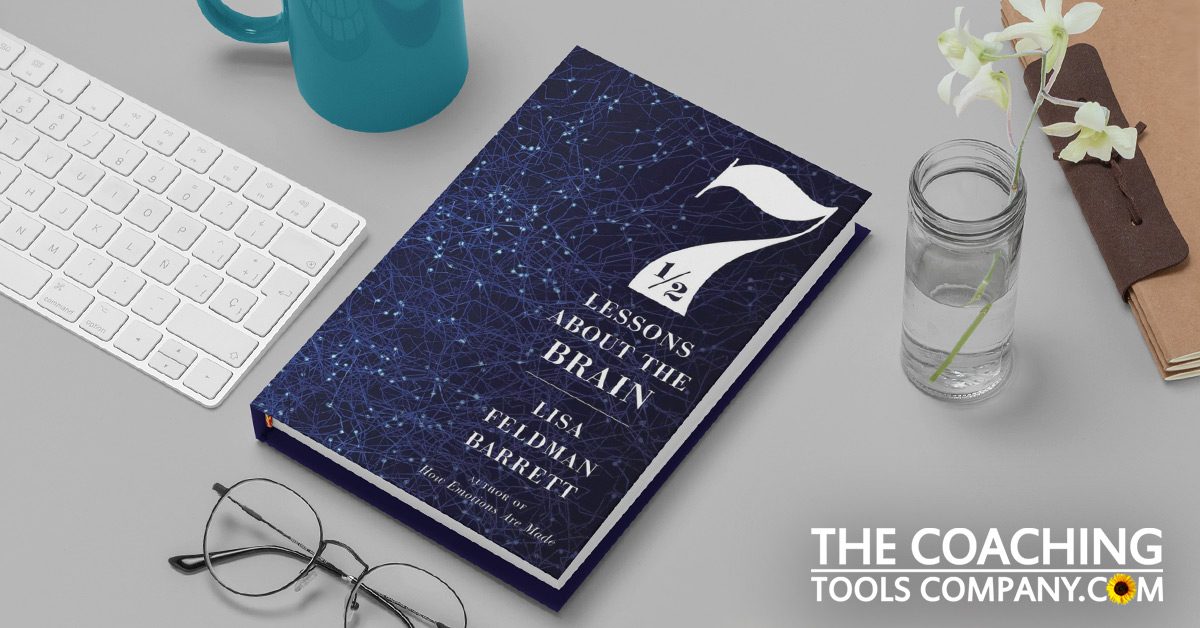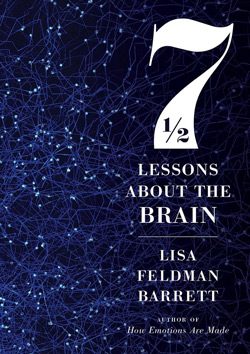Originally Posted on The Coaching Tools Company as For Your Coaching Bookshelf: 7 1/2 Lessons About the Brain | by Dr. Irena O'Brien
“Seven and a Half Lessons About the Brain” by Lisa Feldman Barrett is an engaging and enlightening book that offers readers an accessible introduction to how the brain works.
And I recommend this book to all my students.
In 180 pages, this renowned psychologist and neuroscientist successfully combines scientific knowledge with relatable examples and stories to help readers grasp complex concepts about the brain.
One of the book’s strengths lies in its ability to challenge common assumptions and expand our understanding of the brain. The lessons are structured in a logical and cohesive manner, allowing readers to build upon their knowledge of the brain progressively.
Below I offer a summary of the 7½ lessons. If this excites or interests you, I hope you’ll feel inspired to buy book where Lisa delves into each lesson in more detail, explaining what it means and why it matters.
The half-lesson: “Your brain is not for thinking”
Barrett starts with the half-lesson, where she delves into why and how human brains evolved. Barrett says that as creatures became more complex, they needed larger brains to oversee that complexity.
In other words, the purpose of the brain is not about rationality, emotions or thinking. The brain’s most important task is to control our bodies and manage resources efficiently.
By predicting energy needs, the brain helps us make worthwhile movements and survive.
While our brains enable thinking and experiencing emotions, these abilities are ultimately a by-product of the brain’s central mission to keep us alive and well by managing our body’s functioning effectively.
Lesson 1) “You have one brain (not three)”
You may have heard that we have three separate brains (a “triune brain”)—the cortex, the limbic system and the lizard or reptilian brain—responsible for rationality, emotion and instinctive functions, respectively.
But this isn’t true.
Rationality and emotion are not at odds with each other and do not reside in separate parts of the brain (as we have been led to believe).
This understanding challenges our traditional beliefs and changes how we perceive responsibility and human nature.
Lesson 2) “Your brain is a network”
Contrary to the popular belief that the left side of the brain is logical and the right side is creative, our brains are not divided in this way.
Instead, the brain functions as a network, with interconnected parts working together as a unified system.
We have 120 billion neurons that connect to other neurons, and all the neurons are constantly chatting. They are never off. This network extends beyond neurons to include other cells—even communication with the gut.
Lesson 3) “Little brains wire themselves to the world”
Genes alone do not determine brain development: a baby’s brain is heavily influenced by its surrounding environment.
Caregivers and the social environment play a critical role in shaping a baby’s brain. From exposing infants to light for normal vision development to engaging in social activities, caregivers sculpt a baby’s brain in significant and irreversible ways.
Lesson 4) “Your brain predicts (almost) everything you do”
Your brain is always one step ahead. In fact, the normal state of the brain is prediction—and this allows us to make quick, split-second decisions.
Our brain’s predictions are based on past experiences and influence our future behaviour.
Barrett offers a great example of how our brain predicts: “Think of the last time you were thirsty and drank a glass of water. Within seconds of drinking the water, you probably already feel less thirsty, yet it takes 20 minutes for the water to reach your bloodstream. But your brain has already processed it. That’s how fast the brain works.”
You can change how your brain predicts in the future by being aware of your actions today—because your actions today become your brain’s predictions for tomorrow. And those predictions automatically drive your future action.
Lesson 5) “Your brain secretly works with other brains”
As social beings, we regulate each other’s bodily resources without even realizing it. Interactions with others affect our brain’s structure and function.
Physical connections, such as synchronized breathing and heartbeats, occur between people who have close relationships or engage in shared activities.
Which means that positive connections help our brains function better while negative connections can hinder them.
Lesson 6) “Brains make more than one kind of mind”
Barrett writes, “A particular human brain in a particular human body raised and wired in a particular culture will produce a particular kind of mind.” That’s why no two brains are alike.
All brains are made from the same raw materials. We all have neurons, dendrites, axons and synapses. But minds are a fabrication of the brain and depend in part on micro-wiring that is tuned and pruned by culture and upbringing.
Our minds are not fixed, and we can modify them through various means. People often use substances like caffeine or alcohol to alter their minds temporarily, but lasting changes can come from new experiences or learning. For example, moving into a different culture, even within the same society, can modify minds, requiring our brains to both adapt and ‘prune’ connections.
Lesson 7) “Our brains can create reality”
Social reality is the product of our collective minds, yet we often mistake it for physical reality. We categorize people based on characteristics like gender, race and nationality, treating these categories as natural divisions.
However, these divisions are created and maintained by society. Which means that we have the power to shape social reality and influence our collective destiny—and with this comes both control and responsibility.
Wrap-up
This book is a must-read for any coach. The ability to understand and apply scientific knowledge about the brain is becoming increasingly important in the field of coaching. Seven and a Half Lessons About the Brain is an excellent place to start this journey.
Our brains are remarkable networks designed to control our bodies, predict our actions and engage with the world around us.
Embracing our brain’s potential and its interconnectedness with other brains empowers us to shape our own reality and become active participants in our own lives.
Learn more about “7 1/2 Lessons about the Brain” here >>
|
If you liked this neuroscience book summary and recommendation, you may also like:
- The Scientific Benefits of Journaling for Your Brain! also by Dr. Irena O’Brien
- 3 Insights from Neuroscience to Enhance Your Coaching Relationships by Sarah Evans MCC
- What Neuroscience Tells us about the Awesome Benefits of Mindfulness by Delaney Tosh









